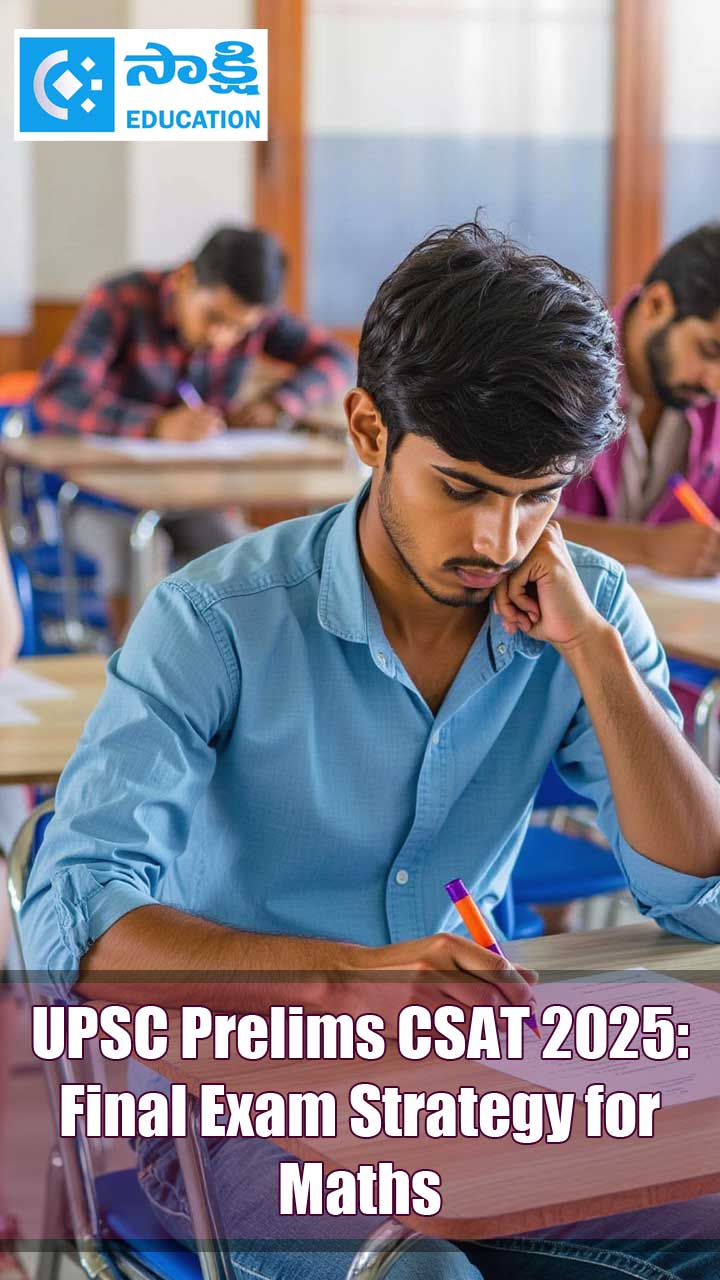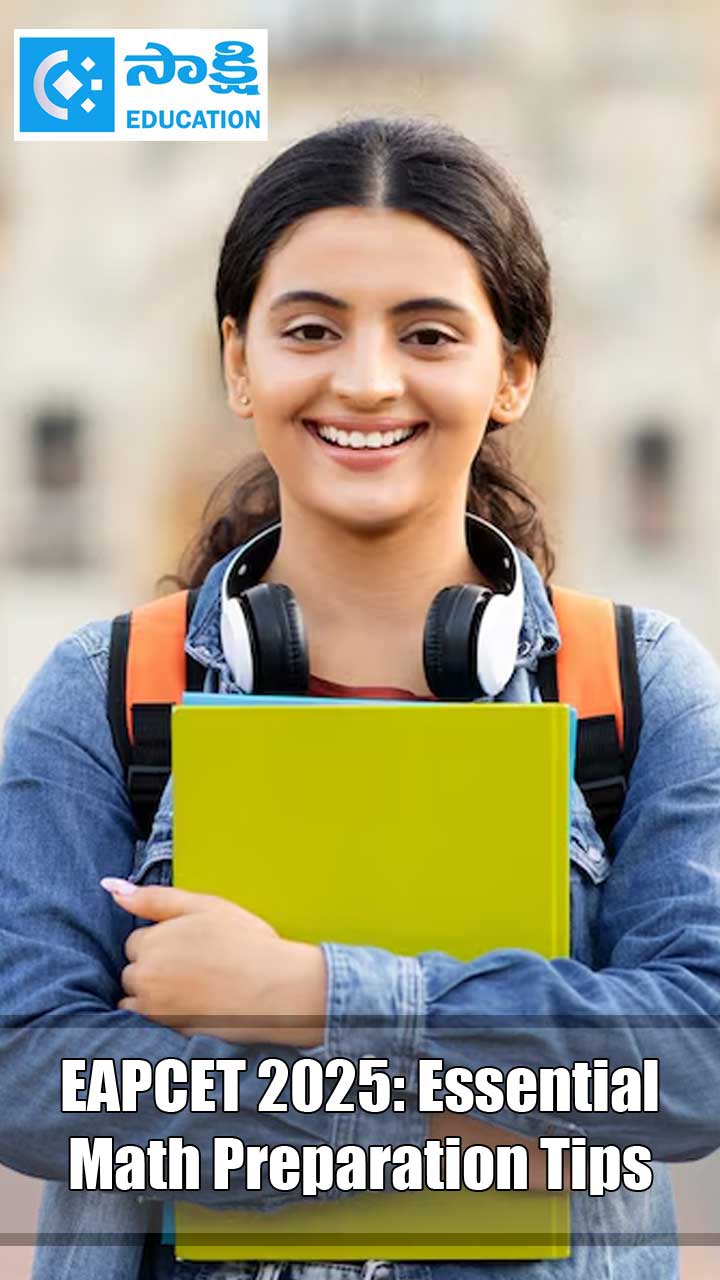TOEFL iBT (Test of English as a Foreign Language)
Sakshi Education
The new TOEFL iBT consists of four sections: Reading, Listening, Speaking, and Writing. The entire test is about four hours long and all sections are taken on the same day.
Format
Test Section Number of Questions Timing
The TOEFL iBT features many of the question types used on the computer-based test. New questions involve integrated (combined) language skills and require test takers to:
TOEFL iBT Reading Section
Academic Reading Skills
The Reading section measures the test taker’s ability to understand university-level academic texts and passages. In many academic settings around the world, students are expected to read and understand information from textbooks and other academic materials written in English. The following are three purposes for academic reading:
Reading to find information
Reading Section Format: Approximately 700 words 3–5 passages, 12–14 questions per passage, 60–100 minutes
Reading passages: The TOEFL iBT uses reading passages from university-level textbooks that introduce a discipline or topic. The excerpts are changed as little as possible so the TOEFL iBT can measure how well students can read academic material.
The passages cover a variety of different subjects. Test takers should not be concerned if they are unfamiliar with a topic. The passage contains all the information needed to answer the questions.
All passages are classified into three basic categories:
Test takers do not need any special background knowledge to answer the questions in the Reading section correctly, but the definition of difficult words or phrases in the passage may be provided. If test takers click on the word, a definition appears in the lower left part of the screen.
The 60 to 100 minutes allotted for this section include time for reading the passages and answering the questions.
Reading Question Formats
There are three question formats in the Reading section:
Academic Listening Skills
The Listening section measures the test taker’s ability to understand spoken English. In academic settings, students must be able to listen to lectures and conversations. Academic listening is typically done for one of the three following purposes:
Listening for basic comprehension
Listening material in the new test includes academic lectures and long conversations in which the speech sounds very natural. Test takers can take notes on any listening material throughout the entire test.
Listening Section Format: 4–6 lectures, 3–5 minutes long each, about 500–800 words 6 questions per lecture 60–90 minutes 2–3 conversations, about 3 minutes long, about 12–25 exchanges 5 questions per conversation 60–90 minutes
Academic Lectures
The lectures in the TOEFL iBT reflect the kind of listening and speaking that occurs in the classroom. In some of the lectures, the professor does all or almost all of the talking, with an occasional comment by a student. In other lectures, the professor may engage the students in discussion by asking questions that are answered by the students.
Conversations in an Academic Setting
The conversations on the TOEFL iBT may take place during an office meeting with a professor or teaching assistant, or during a service encounter with university staff. The contents of the office conversations are generally academic in nature or related to course requirements. Service encounters could involve conversations about a housing payment, registering for a class, or requesting information at the library.
Listening Question Formats
After the listening material is played, test takers both see and hear each question before they see the answer choices. This encourages them to listen for main ideas. There are four question formats in the Listening section:
Academic Speaking Skills Students should be able to speak successfully in and outside the classroom. The Speaking section measures the test taker’s ability to speak effectively in academic settings.
In classrooms, students must:
The Speaking section is approximately 20 minutes long and includes six tasks.
Task Type Task Description Timing
Independent Tasks
3. Campus Situation
Topic: Fit and Explain
Response time: 60 seconds
4. Academic Course Topic: General/ Specific
Response time: 60 seconds
Listen/Speak
5. Campus Situation
Topic: Problem/ Solution
Response time: 60 seconds
6. Academic Course
Topic: Summary
Response time: 60 seconds
TOTAL 20 minutes
Introduction
Independent Speaking
A single question that appears on the screen is read aloud by the narrator. Test takers have 15 seconds to prepare an answer, and have 45 seconds to respond. A clock shows the remaining time for preparation and response.
Integrated Speaking—Read/Listen/Speak
Test takers read a passage on a given topic and then listen to a speaker talk about the same topic. A question appears on the screen and is read aloud by the narrator. Test takers have 30 seconds to prepare their response. They have 60 seconds to respond by synthesizing and summarizing the information they have read and heard.
Test takers are asked to briefly synthesize and summarize the information from the reading and listening material.
Integrated Speaking—Listen/Speak
Test takers listen to part of a conversation or lecture. They are asked to briefly summarize the information from the listening material. For some tasks, they may be asked to summarize the information and express an opinion about it.
TOEFL iBT Writing Section
Academic Writing Skills
In all academic situations where writing in English is required, students must be able to present their ideas in a clear, well-organized manner. The Writing section measures a test taker’s ability to write in an academic setting.
The total time for the Writing section is 50 minutes. Test takers write their responses to two writing tasks (see page 23). Responses are typed into the computer and sent to ETS’s Online Scoring Network where they are scored by certified raters.
Writing Task Types
Task 1: Integrated Writing Task Read/Listen/Write
Format
- The new TOEFL iBT is administered via computer from a secure Internet-based testing network.
- Instructions for answering questions are given within each section. There is no computer tutorial.
- TOEFL iBT is not computer-adaptive. Each test taker receives items that cover the full range of ability.
- Test takers can take notes throughout the entire test. At the end of testing, all notes are collected and destroyed at the test center to ensure test security.
- For the Speaking section, test takers wear noise-cancelling headphones and speak into a microphone. Responses are digitally recorded and sent to ETS’s Online Scoring Network.
- For the Writing section, test takers must type their responses. The typed responses are sent to ETS’s Online Scoring Network.
- Human raters, trained and certified by ETS, rate the Speaking and Writing responses.
- The chart below shows the possible number of questions and the timing for each section.
- The time limit for each section varies according to the number of questions. Every test contains additional questions in the Reading or Listening Section.
Test Section Number of Questions Timing
- Reading: 3–5 passages, 12–14 questions each 60–100 minutes
- Listening: 4–6 lectures, 6 questions each 60–90 minutes
- 2–3 conversations: 5 questions each
- Break 10 minutes
- Speaking 6 tasks: 2 independent and 4 integrated 20 minutes
- Writing: 1 integrated task 20 minutes
- 1 independent task 30 minutes
The TOEFL iBT features many of the question types used on the computer-based test. New questions involve integrated (combined) language skills and require test takers to:
- read, listen, and then speak in response to a question
- listen and then speak in response to a question
- read, listen, and then write in response to a question
TOEFL iBT Reading Section
Academic Reading Skills
The Reading section measures the test taker’s ability to understand university-level academic texts and passages. In many academic settings around the world, students are expected to read and understand information from textbooks and other academic materials written in English. The following are three purposes for academic reading:
Reading to find information
- effectively scanning text for key facts and important information
- increasing reading fluency and rate
- understanding the general topic or main idea, major points, important facts and details, vocabulary in context, and pronoun references
- making inferences2 about what is implied in a passage
- recognizing the organization and purpose of a passage
- understanding relationships between ideas
- organizing information into a category chart or a summary in order to recall major points and important details
- inferring how ideas throughout the passage connect
Reading Section Format: Approximately 700 words 3–5 passages, 12–14 questions per passage, 60–100 minutes
Reading passages: The TOEFL iBT uses reading passages from university-level textbooks that introduce a discipline or topic. The excerpts are changed as little as possible so the TOEFL iBT can measure how well students can read academic material.
The passages cover a variety of different subjects. Test takers should not be concerned if they are unfamiliar with a topic. The passage contains all the information needed to answer the questions.
All passages are classified into three basic categories:
- Exposition
- Argumentation
- Historical
- Pronoun references—The nouns that pronouns refer to in a passage
- Make an inference—To comprehend an argument or an idea that is strongly suggested, but not explicitly stated in a passage
- Exposition—Material that provides an explanation of a topic
- Argumentation—Material that presents a point of view about a topic and provides evidence to support it
- classification
- compare/contrast
- cause/effect
- problem/solution
Test takers do not need any special background knowledge to answer the questions in the Reading section correctly, but the definition of difficult words or phrases in the passage may be provided. If test takers click on the word, a definition appears in the lower left part of the screen.
The 60 to 100 minutes allotted for this section include time for reading the passages and answering the questions.
Reading Question Formats
There are three question formats in the Reading section:
- questions with four choices and a single answer in traditional multiple-choice format
- questions with four choices and a single answer that ask test takers to “insert a sentence” where it fits best in a passage
- new “reading to learn” questions with more than four choices and more than one possible correct answer. (See page 10.)
Academic Listening Skills
The Listening section measures the test taker’s ability to understand spoken English. In academic settings, students must be able to listen to lectures and conversations. Academic listening is typically done for one of the three following purposes:
Listening for basic comprehension
- comprehend the main idea, major points, and important details related to the main idea (Note: comprehension of all details is not necessary.)
- recognize a speaker’s attitude and degree of certainty
- recognize a speaker’s function or purpose
- recognize the organization of information presented
- understand the relationships between ideas presented (for example, compare/ contrast, cause/effect, or steps in a process)
- make inferences6 and draw conclusions based on what is implied in the material
- make connections among pieces of information in a conversation or lecture
- recognize topic changes (for example, digressions7 and aside statements8) in lectures and conversations, and recognize introductions and conclusions in lectures
Listening material in the new test includes academic lectures and long conversations in which the speech sounds very natural. Test takers can take notes on any listening material throughout the entire test.
Listening Section Format: 4–6 lectures, 3–5 minutes long each, about 500–800 words 6 questions per lecture 60–90 minutes 2–3 conversations, about 3 minutes long, about 12–25 exchanges 5 questions per conversation 60–90 minutes
Academic Lectures
The lectures in the TOEFL iBT reflect the kind of listening and speaking that occurs in the classroom. In some of the lectures, the professor does all or almost all of the talking, with an occasional comment by a student. In other lectures, the professor may engage the students in discussion by asking questions that are answered by the students.
Conversations in an Academic Setting
The conversations on the TOEFL iBT may take place during an office meeting with a professor or teaching assistant, or during a service encounter with university staff. The contents of the office conversations are generally academic in nature or related to course requirements. Service encounters could involve conversations about a housing payment, registering for a class, or requesting information at the library.
Listening Question Formats
After the listening material is played, test takers both see and hear each question before they see the answer choices. This encourages them to listen for main ideas. There are four question formats in the Listening section:
- traditional multiple-choice questions with four answer choices and a single correct answer
- multiple-choice questions with more than one answer (e.g., two answers out of four or more choices)
- questions that require test takers to order events or steps in a process
- questions that require test takers to match objects or text to categories in a chart
Academic Speaking Skills Students should be able to speak successfully in and outside the classroom. The Speaking section measures the test taker’s ability to speak effectively in academic settings.
In classrooms, students must:
- respond to questions
- participate in academic discussions with other students
- synthesize9 and summarize what they have read in their textbooks and heard in class
- express their views on topics under discussion
- participate in casual conversations
- express their opinions
- communicate with people in such places as the bookstore, the library, and the housing office
The Speaking section is approximately 20 minutes long and includes six tasks.
- The first two tasks are independent speaking tasks on topics familiar to test takers.
- The remaining four tasks are integrated tasks where test takers must use more than one skill when responding. Test takers first read and listen, and then speak in response. They can take notes and use those notes when responding to the speaking tasks. At least one requires test takers to relate the information from the reading and the listening material.
Task Type Task Description Timing
Independent Tasks
- Personal Preference This question asks the test taker to express and defend a personal choice from a given category— for example, important people, places, events or activities that the test taker enjoys. Preparation time: 15 seconds
Response time: 45 seconds - Choice This question asks the test taker to make and defend a personal choice between two contrasting behaviors or courses of action.
Preparation time: 15 seconds
Response time: 45 seconds
3. Campus Situation
Topic: Fit and Explain
- A reading passage (75–100 words) presents a campus-related issue.
- A listening passage (60–80 seconds, 150–180 words) comments on the issue in the reading passage.
- The question asks the test taker to summarize the speaker’s opinion within the context of the reading passage.
Response time: 60 seconds
4. Academic Course Topic: General/ Specific
- A reading passage (75–100 words) broadly defines a term, process, or idea from an academic subject.
- An excerpt from a lecture (60–90 seconds; 150–220 words) provides examples and specific information to illustrate the term, process, or idea from the reading passage.
- The question asks the test taker to combine and convey important information from the reading passage and the lecture excerpt.
Response time: 60 seconds
Listen/Speak
5. Campus Situation
Topic: Problem/ Solution
- The listening passage (60–90 seconds; 180–220 words) is a conversation about a student-related problem and two possible solutions.
- The question asks the test taker to demonstrate an understanding of the problem and to express an opinion about solving the problem.
Response time: 60 seconds
6. Academic Course
Topic: Summary
- The listening passage is an excerpt from a lecture (90–120 seconds; 230–280 words) that explains a term or concept and gives concrete examples to illustrate that term or concept.
- The question asks the test taker to summarize the lecture and demonstrate an understanding of the relationship between the examples and the overall topic.
Response time: 60 seconds
TOTAL 20 minutes
Introduction
Independent Speaking
A single question that appears on the screen is read aloud by the narrator. Test takers have 15 seconds to prepare an answer, and have 45 seconds to respond. A clock shows the remaining time for preparation and response.
Integrated Speaking—Read/Listen/Speak
Test takers read a passage on a given topic and then listen to a speaker talk about the same topic. A question appears on the screen and is read aloud by the narrator. Test takers have 30 seconds to prepare their response. They have 60 seconds to respond by synthesizing and summarizing the information they have read and heard.
Test takers are asked to briefly synthesize and summarize the information from the reading and listening material.
Integrated Speaking—Listen/Speak
Test takers listen to part of a conversation or lecture. They are asked to briefly summarize the information from the listening material. For some tasks, they may be asked to summarize the information and express an opinion about it.
TOEFL iBT Writing Section
Academic Writing Skills
In all academic situations where writing in English is required, students must be able to present their ideas in a clear, well-organized manner. The Writing section measures a test taker’s ability to write in an academic setting.
- Often students need to write a paper or an essay response on an exam about what they are learning in their classes. This requires combining information they have heard in class lectures with what they have read in textbooks or other materials. This type of writing can be referred to as integrated writing. In this type of writing, students must:
- take notes on what they hear and read, and use them to organize information before writing
- summarize, paraphrase, and cite information from the source material accurately
- write about the ways the information they heard relates to the information they read
For example, in an academic course, a student might be asked to compare and contrast the points of view expressed by the professor in class with those expressed by an author in the assigned reading material. The student must successfully draw information from each source to explain the contrast.
- Students must also write essays that express and support their opinions. In this type of writing, known as independent writing, students express an opinion and support it based on their own knowledge and experience.
For example, students may be asked to write an essay about a controversial issue. The students use past, personal experience to support their position.
- identify one main idea and some major points that support it
- plan how to organize the essay (e.g., with an outline)
- develop the essay by using reasons, examples, and detail
- express information in an organized manner
- use effective linking words (transitional phrases) to connect ideas and help the reader understand the flow of ideas
- use a range of grammar and vocabulary for effective expression
- use grammar and vocabulary accurately; use idiomatic expressions appropriately
- follow the conventions of spelling, punctuation, and layout
The total time for the Writing section is 50 minutes. Test takers write their responses to two writing tasks (see page 23). Responses are typed into the computer and sent to ETS’s Online Scoring Network where they are scored by certified raters.
Writing Task Types
Task 1: Integrated Writing Task Read/Listen/Write
- Test takers read a short text of about 230–300 words (reading time, 3 minutes) on an academic topic.
- Test takers may take notes on the reading passage.
- The reading passage disappears from the screen during the lecture that follows. It reappears when test takers begin writing so they can refer to it as they work.
- Test takers listen to a speaker discuss the same topic from a different perspective.
The listening passage is about 230–300 words long (listening time, 2 minutes). - The listening passage provides additional information that relates to points made in the reading passage. Test takers may take notes on the listening passage.
- Test takers write a summary in connected English prose of important points made in the listening passage, and explain how these relate to the key points of the reading passage. Suggested response length is 150–225 words; however, there is no penalty for writing more as long as it is in response to the task presented.
- Test takers write an essay that states, explains, and supports their opinion on an issue. An effective essay will usually contain a minimum of 300 words; however, test takers may write more if they wish.
- Test takers must support their opinions or choices, rather than simply list personal preferences or choices.
- Typical essay questions begin with statements such as:
- Do you agree or disagree with the following statement? Use reasons and specific details to support your answer.
- Some people believe X. Other people believe Y. Which of these two positions do you prefer/agree with? Give reasons and specific details.
Published date : 30 Aug 2009 05:51PM












